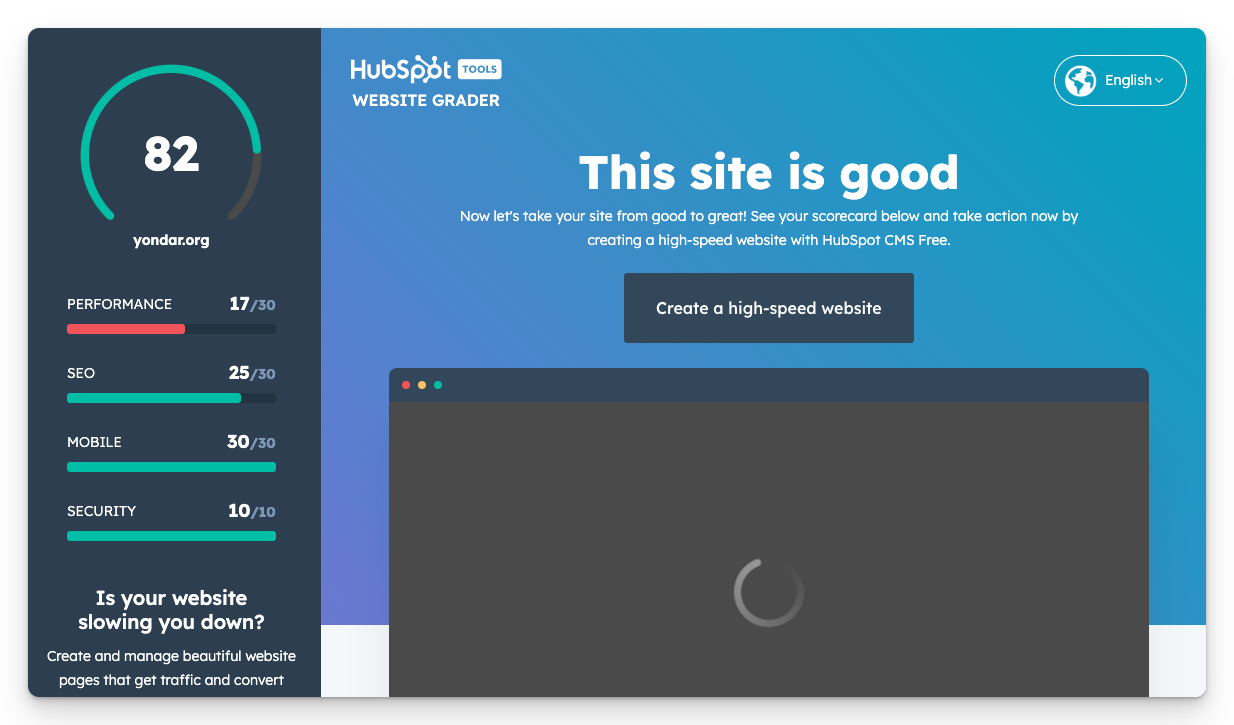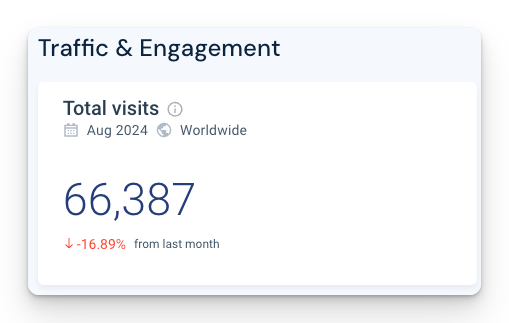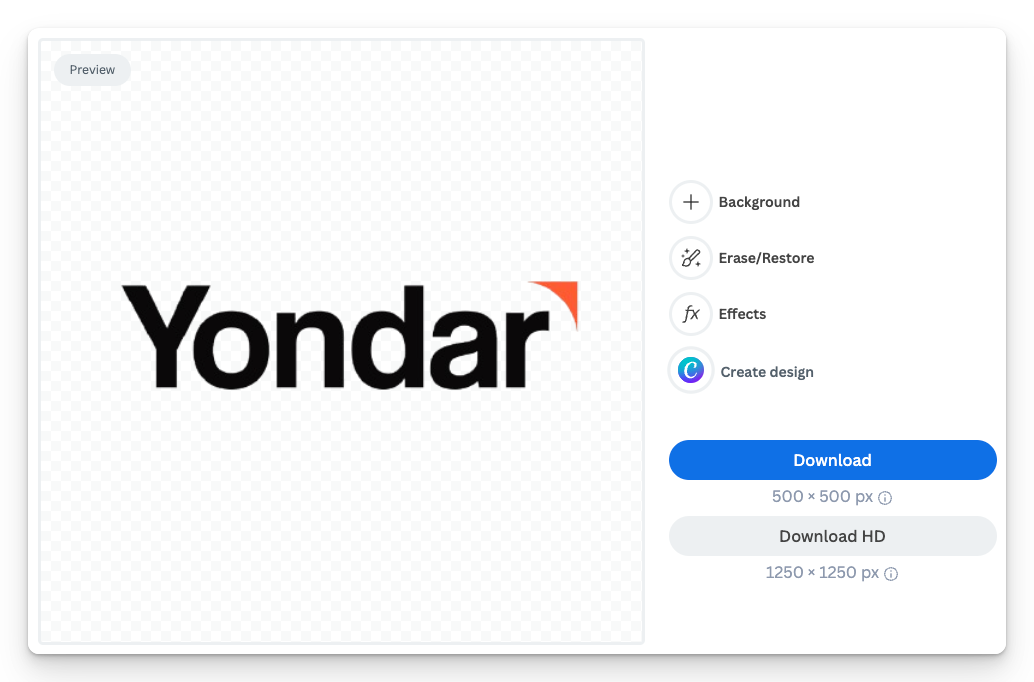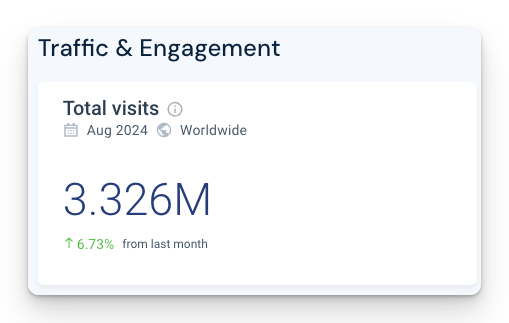I’ve been playing around with Claude.ai and Tiiny.host (check out this game I made in 5mins), and it got me thinking—what useful tools could I build for Yondar that would help users solve related problems? That’s when I stumbled upon the concept of engineering as marketing. The idea is simple: develop adjacent products that help drive traffic and awareness of the core product or service you’re trying to sell. It seemed like the perfect topic to kick off our series on tactics.
What is Engineering as Marketing?
Engineering as marketing focuses on building something functional that provides value to your target audience—whether it’s a free tool, widget or calculator. These tools can help attract users by solving a real problem, before encouraging them to explore your core product or service.
Tactic: Build a free product that solves your target users need
Why?: To increase traffic and leads
Value Lever: Marketing
Value Driver: Revenue through sales volume
Check out this post on value
Examples of Engineering as Marketing
There are plenty of examples I could highlight, but I’ve chosen a mix of different types of organisations and applications to show the variety of ways this tactic can be used.
HubSpot’s Website Grader
The first example is HubSpot’s website grader. Initially launched in 2008 and refreshed in 2020 the website grader is a free tool that lets you input your website URL and get a detailed breakdown of your site’s SEO, performance, and some solid suggestions for improvement.
So why are HubSpot offering it?
HubSpot is a marketing and sales platform tailored for small to medium businesses. The website grader meets HubSpot’s target audience needs, offering real value for business owners and marketers focused on optimising their online presence.
I entered Yondar’s URL and my email, and within seconds, the website grader provided an easy-to-understand report on our site’s performance, complete with recommendations for improvements. Instant, actionable insights—all for free.

The Website Grader site pulls in around 65k site visits per month, and is one of their most successful lead generation tools—so it’s clearly doing the job.

Musings
- Despite its success, HubSpot hasn’t doubled down too heavily on this tactic. They’ve only recently started adding more tools, like their new AI search grader.
- There are a ton of similar free tools out there now, many of which rank higher in search results. The competition is companies like Semrush that target the same marketing users. Value created can be easily degraded if the tools are easily copied.
Note: I used another example of engineering as marketing similarweb.com which allowed me to check the website grader traffic!
Canva’s Acquisition of Kaleido.ai
Kaleido’s background remover is a handy free tool that instantly removes image backgrounds. Canva acquired Kaleido in 2021 and did something clever—they kept the tool as a standalone product instead of folding it into Canva and shutting it down. They’ve managed to capitalise on the huge traffic while also nudging users toward Canva for further design work.

And this strategy in paying off – Kaleido pulls in around 3.3M site visits per month!

Canva have a track record of acquiring in this way. Pulling the functionality from acquired products into their core product, but keeping the website live (and working) to attract new leads. I expect to see a similar approach to Leondardo.ai and Affinity which Canva recently acquired.
| Acquisition | Year | Description |
|---|---|---|
| Leonardo.ai | 2024 | Generative AI content |
| Affinity | 2024 | Suite of professional-grade photo editing, graphic design, and publishing software |
| Flourish | 2022 | Interactive data visualisation |
| Kaleido | 2021 | AI-powered presentation |
| Smartmockups | 2021 | Product mockup generator |
| Pexels | 2019 | Free stock photo and video library |
| Pixabay | 2019 | Free stock photo and illustration library |
Musings
- Canva offers a masterclass in both engineering as marketing and acquisition strategy. The traffic generated by the sites they’ve acquired is astounding, and the way they’ve integrated that value into their core product is pure genius
- This is not a tactic that is easily replicated for start-ups or SMB’s. In 2019 when Canva acquired Pixabay and Pexels, they were valued at 2.5 billion – now they’re valued at $26 billion.
Opes Mortgage Tools
In the final example, I wanted to spotlight a smaller company that’s nailing it with a simpler approach to engineering as marketing. It proves this tactic isn’t just for the big tech giants—it’s accessible and highly effective for businesses of all sizes.
Opes is a New Zealand company focused on property investment services. I’ve always been impressed by their business model and how they approach their marketing funnel. They’ve got some pretty interesting tactics (including this cringe Shark Tank-style video series), but one standout is the free property investment calculators and data models available on their website.

Like the other examples, you’ll notice a prompt for users to “talk to an advisor,” nudging them to the next step in Opes’ funnel—turning web traffic into actual customers.

Musings
- You can probably create a simple calculator tool with Claude.ai in minutes and embed it directly into your website. See my experiment here with Tiiny.host and Claude.ai
- The charts are probably embedded using PowerBI or similar. If you can access data and transform it into something useful, you can fairly simply embed something like this into your website
The Payoff
Leads: Useful tools attract people organically, driving traffic and generating leads
Trust and Credibility: Offering a tool that solves a problem for free builds trust with and credibility with potential customers
Cost-Effective Marketing: Once developed, the tool can be a low-cost marketing asset that can drive leads for years with little ongoing effort
The Playbook
Identify Potential Problems: Start by unpacking problems your target audience faces. Ideally, these should be simple problems to solve that relate to your core product or service. Consider using the customer empathy map to identify problems.
Identify the simple product: Brainstorm different solutions the problems identified. Try to focus on solutions that are simple and low cost, like calculators, charts or simple ai. tools. Consider using weighted short job first to prioritise if you have several ideas
Build: Either try to build it yourself or outsource. At Yondar, we often use Fiverr to outsource work.
Promote: Promote the tool across social media, blogs, and newsletters, focusing on its usefulness rather than pushing sales. Consider posting to forums like ProductHunt to gain attention.
Track Engagement and Leads: Track how users engage with the tool and optimise. Google analytics is a free tool that can be useful for tracking page engagement. If you don’t have that set-up it’s pretty cheap to have done on Fiverr.
Signing Off
I’m going to give this a go myself. I’m thinking a ‘tool finder’ for Yondar, where you can input what problem you’re trying to solve, and we’ll suggest the perfect tools from our toolkit to help you out.
If that turns out to be a little too ambitious, I’ll play with Claude.ai again – maybe business buzzword hangman?
That’s all for this week.
Subscribe for more tactics, tips, and fun experiments—every Tuesday! 🎉